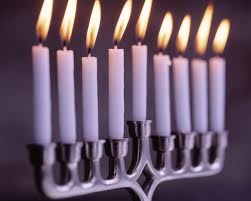By Gabriel Weinstein
 Students in Hebrew schools and Jewish day schools learn that Hanukkah is the celebration of the Maccabees’ improbable military triumph and the miraculous burning of the Beit Hamikdash’s (Holy Temple’s) Menorah for eight days, a holiday for crooning festive tunes and wagering intense games of dreidel. But Hanukkah’s origins in the Nayrot festival are usually never mentioned during classroom discussions or a meal over latkes.
Students in Hebrew schools and Jewish day schools learn that Hanukkah is the celebration of the Maccabees’ improbable military triumph and the miraculous burning of the Beit Hamikdash’s (Holy Temple’s) Menorah for eight days, a holiday for crooning festive tunes and wagering intense games of dreidel. But Hanukkah’s origins in the Nayrot festival are usually never mentioned during classroom discussions or a meal over latkes.
Nayrot (light) was an ancient winter holiday celebrating the increased daylight promised by the winter solstice, and was observed in a way similar to Hanukkah. Nayrot had similar qualities and occurred around the same time as the Greek-Syrian holiday celebrating sun god Kronos-Helios’s birthday, which was observed by Jews and non-Jews in Israel and Greek occupied territories. Households kindled eight flames on a fireboard in their house each night of the eight-day festival. Some added a flame each night while others reduced the number of lit flames. Lighting fires was done to mimic the earth’s natural cycles and believed to persuade nature to elongate daylight. Light’s association with life and darkness’s symbolism of death imbued Nayrot with rejuvenation and optimism. Nayrot was eight days to mirror the length of Passover and Sukkot, the other holidays associated with seasonal changes.
Nayrot seemed primed to establish itself as the third major Jewish seasonal holiday. But religious authorities during the reign of King Hezekiah, whose reign occurred during a period known as the priestly era, scoffed at the idea of Nayrot becoming a major celebration endorsed by the Torah. Nayrot was rejected because it had no explicit divine connections, nor was it associated with the Exodus from Egypt. Nayrot was relegated as a folk festival until the Maccabees seized power and changed the holiday’s meaning to fulfill their personal ambitions.
When the Maccabees defeated the Greek ruler Antochius IV’s regime in 165 BCE they were eager to restore the defiled Beit HaMikdash. Some believe the Maccabees defeated the Greeks in October but waited until the winter to begin their restoration so it corresponded with Nayrot. Judah Maccabee, the military leader of the Maccabees, renamed Nayrot Hanukkah (dedication), and intended it to mark the rededication of the Beit HaMikdash to God. The transition wasn’t too difficult; both holidays celebrate similar human triumphs. According to Rabbi Sherwin T. Wine, founder of the Humanistic Judaism, Nayrot celebrated humans’ ability to produce fire. The ability to produce fire was a crucial step in the development of human self-confidence and essential to societal advancement, says Wine. Though Judah Maccabee most likely did not intend to perpetuate the values of Nayrot, Hanukkah’s emphasis on the Beit HaMikdash’s renewal and personal spiritual rejuvenation seamlessly mesh with the themes of the holiday.
The Book of Hasmoneans implies Hanukkah is celebrated for eight days because the Maccabees had forgotten to observe the eight days of Sukkot while immersed in battle. The Maccabees wanted Hanukkah to become a flagship holiday, but religious authorities cringed. They resented Hanukkah because they believed the Maccabees had unfairly assumed power over the Judean kingdom. When the Rabbinical establishment regained power under Roman rule, Hanukkah was deemed a minor holiday like its predecessor Nayrot.
Though Rabbinic authorities sought to expunge Nayrot and Hanukkah from the canon of Jewish holidays, aspects of the two festivals–some manufactured, others stemming from the original holiday celebrations–have become vital parts of the modern Hanukkah celebration. In the centuries following Hanukkah’s establishment, its religious aspects have been amplified. Many scholars believe rabbis created the idea of the Hanukkah miracle to draw attention away from Hanukkah’s glorification of the Maccabees’ military might. This was an expression of the rabbinical authorities’ frustration that the Maccabees asserted intellectual authority over divine dictums and claimed royal authority though they were not descendants of King David.
Although religious authorities sought to hide Hanukkah’s origins as a folk festival, the spirit and practices of Nayrot lives on. The “Hovevi Zion” Zionist movement of the late 1800’s adopted Hanukkah as their major holiday. They viewed the story of Hanukkah as a metaphor mirroring the Zionist struggle to fortify Jewish identity. Today the city of Haifa uses Hanukkah as a catalyst to promote interfaith solidarity through their annual “Holiday of Holidays” festival celebrating Hanukkah, Christmas and Ramadan. The transformation of Hanukkah from a folk holiday celebrating fire to a festival celebrating divine miracles, military victories and Jewish identity is the ultimate example of the fluidity of Jewish tradition and the effect of cultural impacts that will continue to be a hallmark of ever-evolving Jewish history.
